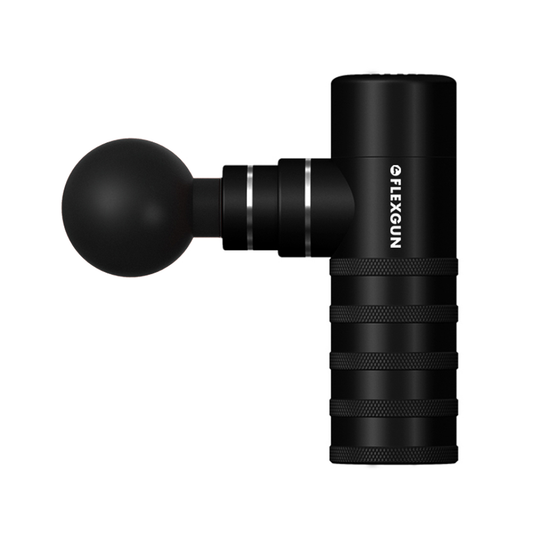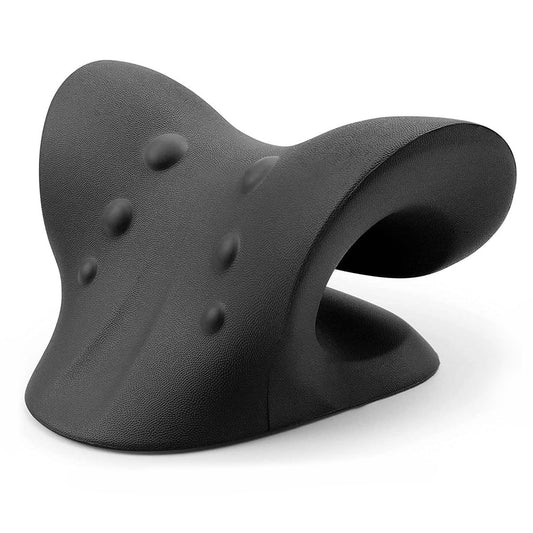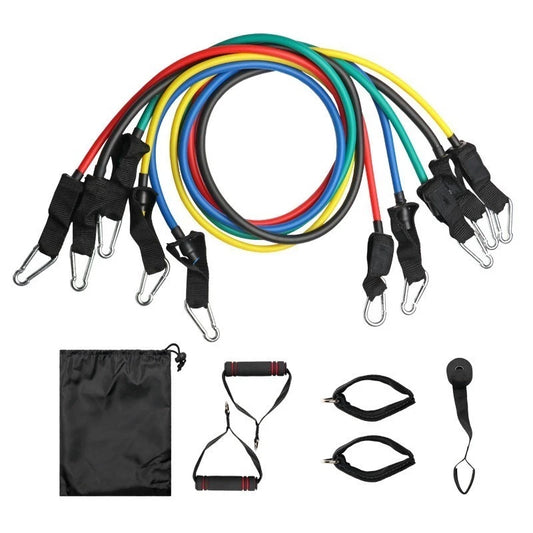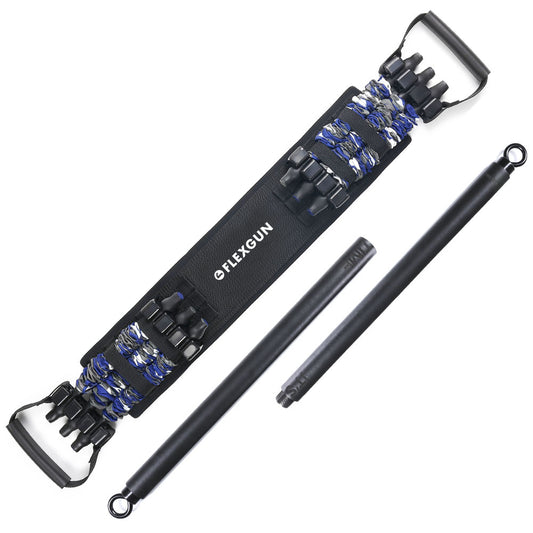Introduction
Did you know that neck pain is a common problem affecting millions of people worldwide? According to the World Health Organisation, around 30% of the global population experiences neck pain at least once in their lifetime. This pain can be caused by various factors such as poor posture, injury, stress, or muscle tension. While there are several ways to treat neck pain, one effective method is by using a neck stretcher.
So, what is a neck stretcher?
A neck stretcher is a device designed to help relieve neck pain and tension by providing gentle stretching and pressure to the neck muscles. It works by creating a natural curve in the neck that helps to realign the spine and reduce pressure on the nerves.

In this blog post, we'll explore the benefits of using a neck stretcher, how to use it properly, and some other strategies for preventing and treating neck pain. By the end of this post, you'll have a better understanding of whether a neck stretcher is right for you.
Benefits and Tips:
There are several benefits of using a neck stretcher, including pain relief, increased mobility, improved posture, and relaxation. Let's take a closer look at each of these benefits.
- Pain Relief:
One of the primary benefits of using a neck stretcher is that it can help alleviate neck pain. The stretching and pressure provided by the device can help to relieve muscle tension and reduce inflammation, which can help to alleviate pain.
- Increased Mobility:
A neck stretcher can also help to increase mobility in the neck. By gently stretching the neck muscles, the device can help to improve range of motion and flexibility. - Improved Posture:
Poor posture is a common cause of neck pain. By using a neck stretcher regularly, you can help to improve your posture by realigning your spine and reducing pressure on your neck and shoulders.
- Relaxation:
Using a neck stretcher can also help to promote relaxation by reducing tension in the neck muscles. This can help to relieve stress and promote a sense of calm.
Now that we've explored the benefits of using a neck stretcher, let's take a look at some tips for using it properly.
- Warm-up:
Before using a neck stretcher, it's important to warm up your neck muscles to prevent injury. Try doing some gentle neck stretches or taking a warm shower to loosen up your muscles. - Adjust the Fit:
Make sure that the neck stretcher fits properly around your neck. It should be snug but not too tight, and the curve should align with the natural curve of your neck. - Start Slowly:
If you're new to using a neck stretcher, start slowly and gradually increase the duration and intensity of your sessions over time.
What Does a Neck Stretcher Do?
A neck stretcher is designed to help alleviate neck pain and tension by providing gentle stretching and pressure to the neck muscles. It works by creating a natural curve in the neck that helps to realign the spine and reduce pressure on the nerves. When used properly, a neck stretcher can help to:
- Stretch and Relieve Tension in the Neck Muscles:
By gently stretching the neck muscles, a neck stretcher can help to relieve tension and reduce stiffness in the neck. - Alleviate Neck Pain:
The stretching and pressure provided by a neck stretcher can help to alleviate neck pain caused by various factors such as poor posture, injury, stress, or muscle tension. - Improve Posture:
Poor posture is a common cause of neck pain. By using a neck stretcher regularly, you can help to improve your posture by realigning your spine and reducing pressure on your neck and shoulders. - Increase Range of Motion and Flexibility:
A neck stretcher can also help to increase range of motion and flexibility in the neck by gently stretching the neck muscles.
Overall, the benefits of using a neck stretcher are supported by scientific studies and expert opinions. For instance, a study conducted by Harvard Health Publishing found that neck stretchers are effective for reducing neck pain and tension. Anecdotal evidence from individuals who use neck stretchers regularly also suggests that the benefits are real and tangible. By incorporating a neck stretcher into your daily routine, you can experience pain relief, increased mobility, improved posture, and relaxation.
How to Use a Neck Stretcher
Proper usage of a neck stretcher is crucial to ensure that you reap its benefits and avoid any injuries. Here's a step-by-step guide on how to use it effectively:
Warm-up your neck muscles
Before using a neck stretcher, it's essential to warm up your neck muscles to prevent any strains or sprains. Three simple neck stretches can be done to warm up the muscles. Firstly, gently tilt your head to the left, trying to touch your left ear to your left shoulder, hold it for five seconds, and repeat on the right side. Next, nod your head forward, tucking your chin into your chest, and hold for five seconds. Finally, tilt your head backward, looking up towards the ceiling, and hold for five seconds.
Adjust the fit
To get the most out of your neck stretcher, adjust it to fit your neck properly. Follow the instructions provided by the manufacturer on how to adjust the device, ensuring that it's comfortable and snug around your neck.
Start slowly
When using a neck stretcher for the first time, start slowly and gradually increase the duration and intensity of the stretch. Begin by using the device for 10-15 minutes, and gradually increase the time up to 30 minutes or as instructed by the manufacturer.
How long should you lay on a neck stretcher?
It's recommended to start with short sessions of 10-15 minutes and gradually increase the duration as your neck muscles get used to the stretch. It's best not to use a neck stretcher for more than 30 minutes in one session to avoid any overstretching that can cause discomfort or injury.
How often should you use a neck stretcher?
The frequency of using a neck stretcher depends on the individual's needs and preferences. It's generally safe to use it every day, but it's essential to listen to your body and not overdo it. For most people, using it two to three times a week is enough to reap its benefits.
Other Strategies for Preventing and Treating Neck Pain
While neck stretchers can be an effective tool for relieving neck pain and tension, it's important to remember that they are just one part of a comprehensive strategy for managing neck pain. Here are some other strategies that can complement the use of a neck stretcher:
-
Good Posture Habits:
Poor posture can contribute to neck pain and tension. By maintaining good posture throughout the day, you can reduce the strain on your neck muscles. Make sure to keep your shoulders relaxed and avoid slouching or craning your neck forward when working at a desk or using electronic devices. Check out our posture checklist here.
-
Exercise:
Regular exercise can help strengthen the muscles in your neck and reduce the risk of injury. Try incorporating exercises that focus on the neck and shoulders into your routine, such as neck stretches, shoulder shrugs, and seated rows.
-
Stress Reduction Techniques:
Stress can cause tension in the neck and shoulders, so it's important to find ways to manage stress in your daily life. Consider practicing relaxation techniques such as meditation, deep breathing, or yoga.
Is it okay to stretch your neck every day?
Yes, it is generally safe to stretch your neck every day as long as you use proper technique and don't overdo it. However, if you have any underlying medical conditions or neck injuries, it's always a good idea to check with your healthcare provider before starting any new stretching routine.
How do you fix a neck hump?
A neck hump, also known as a dowager's hump, is a rounded bump that can form at the base of the neck. It can be caused by poor posture, osteoporosis, or other medical conditions. To fix a neck hump, it's important to address the underlying cause. This may involve improving posture, getting treatment for osteoporosis or other medical conditions, or working with a physical therapist or chiropractor to strengthen the muscles in your neck and shoulders.
Are Neck Stretchers Good for You?
While neck stretchers can be a useful tool for relieving neck pain and tension, it's important to be aware of potential risks and side effects. Here are a few things to keep in mind when considering the use of a neck stretcher:
1. Potential Risks and Side Effects:
Neck stretchers are generally considered safe when used correctly, but there are a few potential risks and side effects to be aware of. These include:
-
Increased pain or discomfort:
If you use a neck stretcher improperly or for too long, it can cause increased pain or discomfort. Be sure to follow the instructions carefully and start slowly to avoid over-stretching.
-
Pinched nerves or muscle strains:
In rare cases, using a neck stretcher can lead to pinched nerves or muscle strains. This is more likely to happen if you have an underlying neck condition or if you use the stretcher incorrectly.
-
Dizziness or lightheadedness:
Some people may experience dizziness or lightheadedness when using a neck stretcher, especially if they have low blood pressure. If this happens to you, stop using the stretcher immediately and consult with a healthcare professional.
2. Using a Neck Stretcher Safely and Effectively:
To minimise the risk of injury and maximise the benefits of using a neck stretcher, be sure to follow these safety tips:
- Warm up your neck muscles with some gentle stretches before using the neck stretcher. This can help prevent injury and make the stretching more effective.
-
Adjust the stretcher to fit your neck comfortably. It shouldn't be too tight or too loose, and it should support the natural curve of your neck.
-
Start slowly and gradually increase the amount of time you spend using the stretcher. Aim for 5-10 minutes at a time, and don't overdo it.
- Stop using the stretcher immediately if you experience any pain or discomfort. Consult with a healthcare professional if the pain persists.
Do Cervical Pillows Actually Work?
Cervical pillows are a type of pillow designed to support the neck and head while sleeping. They are often recommended for people who suffer from neck pain, stiffness, or headaches. Unlike neck stretchers, which are designed for active stretching and exercises, cervical pillows are passive tools that support proper alignment of the neck and head during sleep.
There is some evidence to suggest that cervical pillows can be effective in reducing neck pain and improving sleep quality. A study published in the Journal of Manipulative and Physiological Therapeutics found that participants who used cervical pillows reported significant improvements in neck pain and sleep quality compared to those who used regular pillows.
However, other studies have found mixed results, with some participants reporting no significant improvement in pain or discomfort. It's important to note that not all cervical pillows are created equal, and choosing the right pillow for your individual needs is crucial for achieving maximum benefit.
When choosing a cervical pillow, look for one that supports the natural curvature of your spine and provides proper support for your head and neck. It's also important to consider your sleeping position, as different pillows may be better suited for side sleepers, back sleepers, or stomach sleepers.
It's worth noting that while cervical pillows can be helpful in managing neck pain, they are not a magic cure. It's important to combine the use of a cervical pillow with other strategies for preventing and treating neck pain, such as good posture habits, exercise, and stress reduction techniques.
Summary
In conclusion, neck stretchers can be an effective tool for relieving neck pain and tension, promoting mobility and good posture, and inducing relaxation. They should be used in conjunction with other strategies, such as good posture habits, exercise, and stress reduction techniques, to prevent and treat neck pain. When using a neck stretcher, it's important to warm up the neck muscles first and to start slowly, gradually increasing the time spent on the stretcher. It's also important to use a neck stretcher regularly to see the benefits. While there are some risks and side effects associated with using a neck stretcher, these can be minimised by using the stretcher safely and following the instructions carefully.
Cervical pillows are another tool that can be used to support the neck and relieve pain, but the evidence for their effectiveness is mixed. When choosing and using a cervical pillow, it's important to consider factors such as the firmness and shape of the pillow and whether it's appropriate for your sleeping position.
If you're experiencing neck pain or tension, we encourage you to try using a neck stretcher or cervical pillow, in consultation with a physiotherapy expert. By incorporating these tools into a comprehensive approach to neck pain management, you may find relief and improve your overall neck health.
To learn more about physiotherapy tips and techniques, subscribe to our blog for regular updates. Or, if you're ready to try a neck stretcher for yourself, click here to browse our high-quality neck stretcher.





